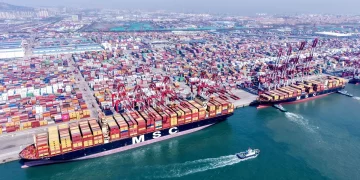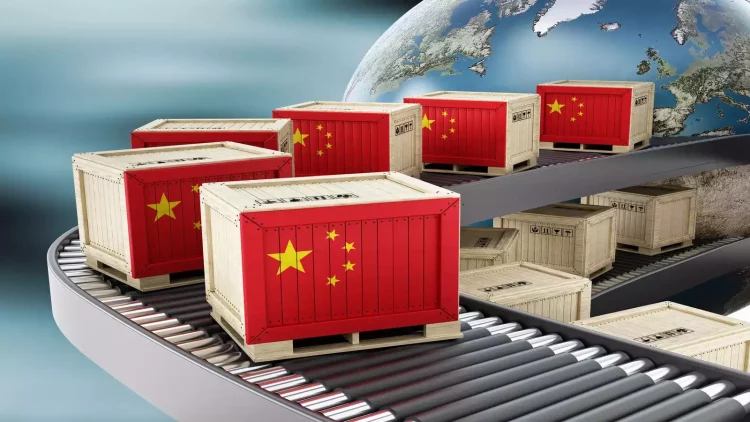Introduction
China, long considered the engine of global growth, is facing an economic slowdown that has raised concerns across financial markets worldwide. As the second-largest economy in the world, China’s growth trajectory has major implications for global trade, supply chains, and investment strategies. The slowing of its economic expansion, driven by a complex mix of domestic and external factors, is reshaping not only its own market landscape but also the broader global economy. This article delves into the causes behind China’s economic slowdown, explores expert opinions on how it will affect global markets, outlines investment strategies for navigating the uncertainty surrounding China’s future, and assesses the geopolitical and economic repercussions for Western investors.
1. Analysis of China’s Economic Growth Slowdown and Its Causes
China’s rapid economic rise over the past few decades has been nothing short of remarkable. From a largely agrarian society to a global manufacturing powerhouse, China’s growth has been fueled by export-driven industries, foreign direct investment, and a burgeoning middle class. However, in recent years, the country’s growth rate has slowed significantly.
Key Factors Behind the Slowdown
- Declining Export Growth: One of the key drivers of China’s economy has been its export sector, which has flourished thanks to the country’s role as the world’s factory. However, declining demand in key markets, such as the United States and Europe, compounded by ongoing trade tensions, especially with the U.S., has hurt export growth. The global economic slowdown and trade barriers have further impacted China’s export performance.
- Property Sector Crisis: A key pillar of China’s economic growth has been its real estate sector, which has driven significant domestic investment. However, the sector has been experiencing a crisis, with overleveraged property developers like Evergrande facing severe financial distress. The resulting slowdown in real estate development, coupled with a decrease in property prices, has had a ripple effect across China’s economy, affecting construction, banking, and consumer confidence.
- Demographic Challenges: China’s aging population, combined with a declining birth rate, is a long-term demographic challenge that is beginning to bite. The shrinking workforce, coupled with an increasing number of retirees, puts pressure on the country’s social safety net and reduces the available labor force for industrial growth. This demographic shift is expected to have profound economic consequences over the next few decades.
- Environmental and Regulatory Pressures: As part of its commitment to achieving carbon neutrality by 2060, China has implemented several environmental policies that impact heavy industries. Restrictions on energy-intensive industries like coal, steel, and cement, in line with the country’s green goals, have contributed to the deceleration of industrial output. Additionally, regulatory crackdowns in sectors such as technology and education have also dampened growth prospects.
- COVID-19 and Supply Chain Disruptions: The pandemic’s impact on the global economy and China’s stringent COVID-19 containment measures have exacerbated supply chain disruptions. Factory shutdowns, labor shortages, and logistics bottlenecks have not only slowed production but have also led to inflationary pressures across industries, further hampering economic recovery.
2. Expert Opinions on How This Will Affect Global Trade, Supply Chains, and Financial Markets
China’s economic slowdown has significant ramifications for global trade, supply chains, and financial markets, all of which are tightly interconnected with China’s economic activities. Experts have weighed in on how these global systems are likely to be affected.
Impact on Global Trade
China’s decreasing demand for raw materials, energy, and consumer goods could have a domino effect on global trade, particularly for emerging market economies that rely on exports to China. Countries in Southeast Asia, Latin America, and Africa, which have positioned themselves as suppliers of raw materials, may experience a slowdown in trade volumes. This is particularly true for commodities such as oil, coal, copper, and rare earth elements, where China is a key importer.
Additionally, the reduction in Chinese demand for goods such as luxury products, electronics, and consumer goods is affecting multinational companies that have heavily invested in the Chinese market. Western companies, especially those in the luxury, tech, and automotive sectors, may see their revenue growth stunted as a result.
Supply Chain Disruptions
China plays a central role in global supply chains, both as a major manufacturer and as a key supplier of components. A slowdown in China’s economy leads to production delays, inventory shortages, and disruptions in the timely delivery of goods. For industries such as electronics, automotive, and pharmaceuticals, China’s economic slowdown has the potential to cause significant ripple effects in supply chains worldwide.
The increased regulatory scrutiny in China, particularly in technology and manufacturing, has made it more difficult for international firms to navigate the business environment. Companies may need to reconsider their reliance on Chinese production and explore diversifying supply chains to other regions in Southeast Asia, India, or even domestically in Western countries.
Impact on Financial Markets
The slowdown in China is likely to affect global financial markets in a variety of ways. Equity markets, particularly in emerging markets, may face downward pressure due to declining Chinese demand for goods and services. Investors with significant exposure to China may also face increased risk, particularly those invested in Chinese stocks, real estate, or related sectors.
Bond markets may also be affected, as China’s decelerating economic growth could lead to tightening credit conditions, both within the country and in global markets. This could result in rising yields in developed economies as investors seek safer assets like U.S. Treasuries or German bunds.
Furthermore, China’s economic slowdown could impact the global oil market. As China is one of the largest consumers of oil, any decrease in demand from the country may contribute to a decline in global oil prices, affecting energy-producing nations and industries reliant on oil prices.

3. Investment Strategies for Navigating the Uncertainty Around China’s Future
Given the uncertainties surrounding China’s economic future, investors need to approach the Chinese market with caution. Here are some strategies for navigating the challenges posed by China’s economic slowdown:
1. Diversification Across Geographies
Diversifying investment portfolios away from China-focused assets is one way to hedge against the country’s slowdown. Emerging markets outside of China, such as India, Southeast Asia, and even Latin America, offer attractive growth opportunities and are likely to benefit from the global shift away from reliance on Chinese manufacturing.
2. Focus on Technology and Green Investments
Despite the overall slowdown, certain sectors within China may continue to thrive. Technology and green energy investments are expected to receive strong government support as part of China’s long-term policy agenda. Investors could consider investing in Chinese companies within these sectors, focusing on firms that are positioned to benefit from China’s digital transformation and green initiatives.
3. Hedging Against Currency Risk
As China’s economic outlook weakens, the yuan may come under pressure, leading to currency depreciation. Investors should consider hedging against yuan risk or diversifying into other currencies, particularly those of countries with more stable economies or those likely to benefit from a global shift away from China.
4. Real Estate and Commodities
The real estate sector in China has experienced significant turmoil, and while this may represent an opportunity for distressed asset investors, it remains a risky space. Additionally, commodities that are heavily tied to Chinese demand, such as industrial metals, may experience price volatility. Investors should carefully monitor commodity markets to identify opportunities for profit amid ongoing uncertainty.
4. The Geopolitical and Economic Repercussions for Western Investors
For Western investors, China’s economic slowdown represents a multifaceted challenge. Beyond the financial implications, geopolitical tensions between China and Western countries, particularly the U.S., could exacerbate market volatility. Increased regulatory scrutiny on Chinese companies, especially in sectors such as technology and finance, could affect their global competitiveness.
Investors with significant exposure to Chinese assets, such as equities, real estate, or bonds, may need to assess the potential risks related to increased government intervention, regulatory changes, and geopolitical tensions. The trade war between the U.S. and China, as well as ongoing concerns over Taiwan, adds an element of unpredictability that must be factored into investment strategies.
Conclusion
China’s economic slowdown is a pivotal moment for global markets, signaling a shift in the dynamics of global trade, supply chains, and investment strategies. While the slowdown presents risks, it also offers opportunities for investors who are willing to navigate the uncertainty. By diversifying portfolios, focusing on emerging markets, and hedging against geopolitical risks, investors can better position themselves to weather the effects of China’s changing economic landscape. As Western economies adjust to China’s new economic reality, staying informed about the country’s economic and political developments will be crucial for investors seeking to minimize risk and maximize potential returns.































